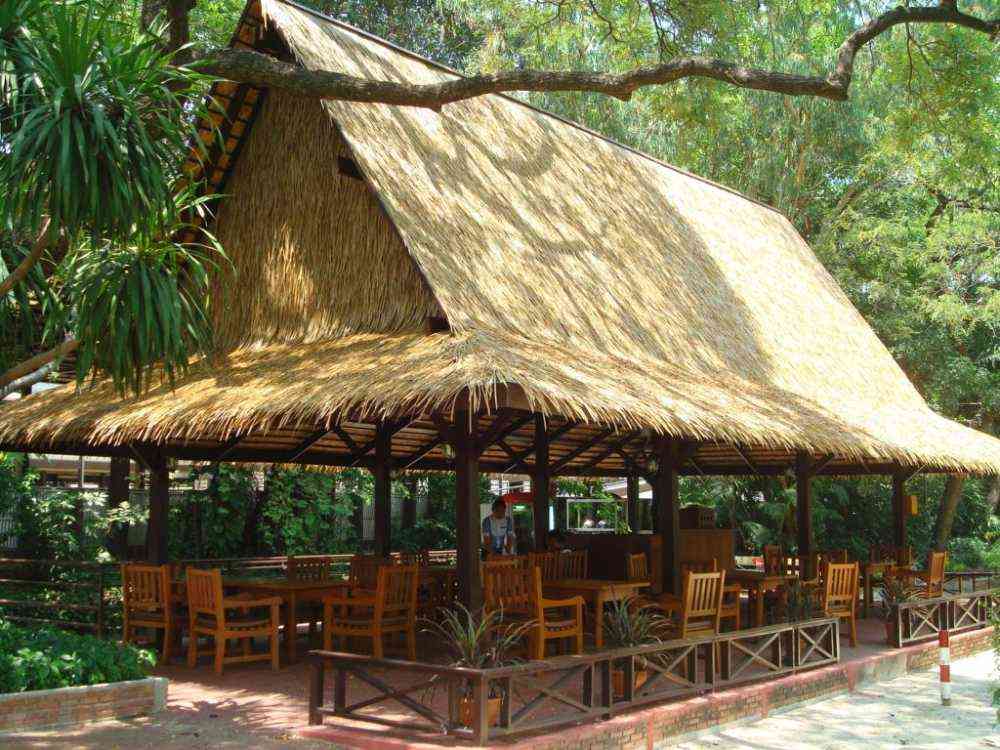Thatch roofs have a unique visual appeal but the natural material is fire hazardous, require consistent maintenance and can rot with time. That’s why, homeowners, builders, contractors, and others in the roof construction industry prefer synthetic thatch roofs.
The synthetic material is extremely durable, fire-resistant, and weather-proof. The synthetic material is resistant to pests and does not have the risks of rotting. Compared to natural material, synthetic material has a longer lifespan.
Additionally, synthetic thatch roofsstay in the same condition with minimal maintenance. Plus, the synthetic roof has the same authentic look and feel as a natural thatch.
If you want to achieve the aesthetics of natural thatch in cities like Vizag, Goa, and Alwar but want a cost-effective option, choose the synthetic option. Keep reading to learn the reasons why this man-made version has taken precedence over natural material in recent times.
But first, let’s understand what the synthetic thatch roof is.
A synthetic thatch is a man-made material that looks similar to a natural one. The look and feel, and visual aspects are the same. However, natural thatch is made from dried grass, palm leaves, or reeds. Thus, there is an increased risk of hazards and rotting. Natural thatch requires regular care and maintenance.
Synthetic thatch roofs, on the other hand, are engineered by man as weather-resistant materials using synthetic fibres, PVC, or high-density polyethene. As a result, they are weather-resistant, rot-resistant, and wear-and-tear-resistant. These materials are available in different styles, colours, and designs.
With the synthetic thatch material, you can render a rustic and countryside feel to your home, commercial, and residential properties.
Reasons why Synthetic thatch roofs are becoming increasingly popular?
Sustainable Option
While the material of the synthetic version may not appear eco-friendly upfront, but the engineering process involves sustainable measures. The manufacturing process does not involve the usage of natural materials like reeds or straw. Farming these natural materials can lead to large-scale deforestation or the depletion of the local ecosystem.
With growing awareness about sustainability, most manufacturing companies today reuse and recycle materials during the production process. This leads to reduced carbon footprint and impact on the ecosystem.
Also, unlike natural thatch, man-made thatch has a long lifespan. Thus, there is no need for regular replacement of the material. This helps minimise waste.
Insulation & Energy-Efficiency
The design of synthetic thatch roof is such that air is trapped inside the multiple layers. This tradpped air acts as an insulator. Thus, homeowners do not require to buy additional insulators for their homes. Insulation helps save energy costs for homeowners, especially in places where the weather conditions fluctuate between extremes. Since the artificial thatch roof works as an insulator, homeowners do not have to spend extra on equipping the home with additional heating or cooling systems.
Weather-Resistant
India is a land of extreme climates. If you live in areas which are prone to snowing or torrential rains, synthetic thatch roof is an ideal alternative. The engineered roof material can easily resist water, and other elemental features, including the harmful ultraviolet rays of the sun. Thus, homeowners do not have the stress of the roofs rotting due to weather conditions. Structural issues are minimised too. To top it off, the visual look and appeal of the roof does not fade away even when exposed to such degradging conditions.
An Affordable Option
Installing synthetic thatch roof is a cost-effective solution. Yes, the upfront costs are higher vis-a-vis natural thatch roof installation. However, since the synthetic material has a longer lifespan, and involves minimal maintenance, in the long run, the initial costs balance off. The synthetic roofs, once installed, usually do not require replacement and can last for many seasons in the ‘as it is’ condition.
Visual Beauty
Finally, the reason why more and more people are choosing synthetic thatch roof is because the engineered roof has the same classical feel like natural thatch. The rustic and the earthly tone are well replicated during production. The aesthetic beauty of engineered thatch lasts for a longer time too because of the manufacturing quality. For homeowners, hotel and resort owners, synthetic thatch is a great option due to the aesthetic look-and-feel and durability aspect.
Indian Tourism Hotspots Showcasing Synthetic Thatch Roofs
Mumbai – The commercial capital of India is ruptured for the iconic Gateway of India. Since artificial thatch roofs are resistant to heat and humidity, these are ideal for this coastal city along Marine Drive in Maharashtra.
Udaipur – Called the “City of Lakes,” Udaipur’s picturesque destination is known for its serene lakes and palaces. The aesthetics of the man-made thatched roofs elevate thevisual appeal of the city, making it a must-visit place in Rajasthan.
Pondicherry – This French colony along the Indian coast is famous for its French-style architecture and spiritual vibes. Synthetic thatch roofs are ideal for the warm and humid climate, especially at key locales of tourist attractions.
Conclusion
To summarise, synthetic thatch roof offers a stylish, durable and low-maintenance option to conventional and natural thatch. The advantages are too many as the material is resistant to pests, weather, water, wear and tear, and other aspects. The engineered roof can withstand all kinds of rough and harsh conditions without losing its glow, finish, and beauty. These roofs act as the perfect alternative for residential and commercial properties. The roofing solution does not require frequent upkeep and maintenance, making it a popular choice amongst homeowners, roof contractors, architects, and others from the construction industry. It is a durable, long-lasting, and sustainable roofing solution; that’s why, synthetic thatch is a preferred roofing material with each passing day in different cities in India.

